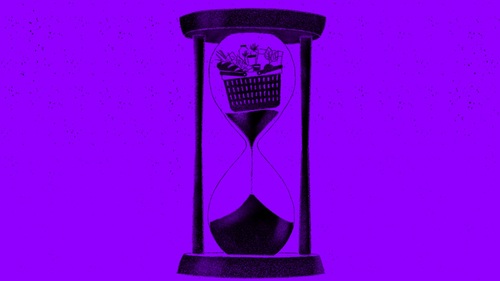Millennials in today’s day & age want everything instantly. We are the “I want it now” generation!
Everything needs to be fast, easy and convenient. Even grocery delivery.
So much so that this “quick delivery of groceries” market in India by itself will be worth $5 billion by 2025!
Don’t believe me? Let’s quickly look at the amount of money being poured into upcoming startups in this space.
I deliver groceries in 10 minutes, show me the money!
Zepto is a 10-month old “quick commerce” startup by 2 teen techies, both 19-year olds & Stanford dropouts. They raised a whopping $60 million in just 7 months, and then raised another $100 million in just the next 45 days! Zepto’s already valued at $570 million & eyes to become a unicorn very soon.
Of course, the online food giants, Swiggy & Zomato, weren’t going to stay quiet on this. Swiggy decided to pour in $700 million to scale up its “quick commerce” platform, Instamart. While Zomato plans to pump in $500 million into Blinkit, another 10-min grocery delivery startup, earlier known as Grofers (remember the OG of online grocery delivery?).
Huh! It’s just raining money in this space, and we were curious as hell to figure out what’s going on!
Okay firstly, what does “quick commerce” even mean?
So, “quick commerce” by definition implies delivery of things within 10-45 minutes. Usually, these are consumables — packaged foods, beverages, medicines, pet supplies, tobacco & so on. Of course, no one’s stopping them from delivering flowers, gifts, books, etc., as long as these items are delivered within the time limit i.e. 10-45 minutes.
Let’s take a real quick example. What do you do when you realise just before cooking that there’s no salt in the kitchen? Easy — you go to the local kirana shop downstairs, and buy a packet of salt. All of this of course gets done in a span of 15-20 minutes.
So all of these “quick commerce” startups (Zepto, Instamart by Swiggy, Zomato-backed Blinkit, etc.) help you do this with just the click of a button.
Got it! But is this really such a big thing?
Well, if you just consider the market for this, otherwise called “Total Addressable Market” or TAM, the opportunity is huge.
Let me lay down some facts:
- Currently, the “quick commerce” market size is $300 million, and is set to grow to $5 billion by 2025.
- In 2020, India's online food delivery market was valued at ~$5 billion. The Covid-19 pandemic gave it a push, and it's expected to reach about $21 billion by 2026. That’s a yearly growth of 30%.
So again, the “quick commerce” market by itself is huge, while also playing the catching up game with the online food delivery market.
Of course, if these numbers look lucrative to you & us, players like Swiggy, Zomato & Zepto would be drooling over it. So there’s going to be a bloodbath (in fact, there already is) among startups to acquire new users.
But here’s the thing — businesses need to turn profits to survive. Companies can’t just exist on external funds being constantly pumped in.
So the question arises, are any of these startups profitable, and if not, when will they turn a profit?
To answer that, let’s crunch some numbers.
Can “quick commerce” startups make money?
Basically, before any company becomes profitable, they need to first have positive unit economics.
What is unit economics, you ask?
Put simply, unit economics is the direct costs and revenues associated with a business on a per-unit basis.
In other words, revenue minus variable costs → unit economics.
Clearly, we are ignoring fixed costs here like the cost of building tech.
Also, a unit is any quantifiable entity that creates value for a business. So it can be a single order or even one customer.
Right then, let’s break down the unit economics for Blinkit or Grofers.
Unit economics for Blinkit or Grofers
There are multiple ways to calculate unit economics, but to keep things simple, we’ll be using this formula:
Unit economics = Total value a customer brings in (Customer Lifetime Value or CLTV) - Cost to acquire one customer (Customer Acquisition Cost or CAC)
So, we’re treating a single customer as one unit.
- Calculating CLTV
- Average delivery fee — INR 49
- Average delivery cost (delivery partner fee, petrol etc.) — INR 44 (taking the proxy of Zomato's delivery cost in 2020)
- So, every Grofers customer brings in a business of INR 5/order.
- Calculating CAC
- Average cost to acquire a customer — INR 350-400 → INR 375 (avg)
- So, if a single customer places 75 orders, we will end up with a unit economics of INR 5 * 75 - 375 = 0
So for Blinkit to achieve positive unit economics, every customer needs to place more than 75 orders.
But wait, what about ‘free delivery’ & ‘discounts’?
If the calculations were that simple, these companies would be turning a profit already!
Here’s the catch — Blinkit or any other 10-min delivery startup offers free delivery beyond a minimum order value. For Blinkit, that minimum is INR 249.
Now, the fun part is that the average order value on Blinkit for 10-min deliveries is INR 250. So effectively, most of the orders are actually not bringing in any tangible revenue for Blinkit!
To add on to this, all of these startups offer lucrative discounts or freebies that keep increasing the CAC above.
So why not just stop the free delivery & discounts?
Well, it’s not that easy for 2 reasons:
- These startups fear losing customers in large numbers if they remove free delivery suddenly.
- But more importantly, they will lose these customers to their competitors, who may continue to offer free delivery.
So even if Blinkit decides to charge delivery fees for every single order, Swiggy’s Instamart may still continue to offer free delivery from the $700 million they are pouring into the business.
And you know the result. People would flock in huge numbers to whichever app offers them free delivery.
But then why are VCs so hot on 10-min delivery startups?
There’s actually just a one word answer to that — TAM.
No kidding, take any industry and ask the question why are investors so crazy about it despite stiff competition & huge losses. The only logical explanation anyone can offer is that there’s a HUGE market to tap into.
So we saw earlier that both “quick commerce” & online food delivery have a huge potential market or TAM.
Not just that, the entire consumables market is expected to grow to $1 trillion by 2025. Quick commerce is just 7% of the consumables market right now, and will grow to 12-13% by 2025. So there’s an entire trillion dollar industry to tap into!
Wow, those numbers do sound exciting. There seems to be crazy growth potential in this space.
But wait, didn’t you just tell me that for any business to survive, they need to be profitable. And with the numbers we saw and the number of competitors, this doesn’t seem so easy.
True, so becoming profitable in this space is going to be super crazy tough (not even exaggerating).
- You start charging delivery fees for all orders, but then you have competitors offering free delivery and the fear of losing customers to them. Not just existing customers, conglomerates with deep pockets like Tata, Reliance & even Amazon can enter this market, and make profitability look like a dream.
- You start looking for alternative revenue streams like advertising or B2B services like packaging. But can this cover up for all the huge losses from the main business? Maybe not.
To sum it up, there’s no definitive answer on profitability if you ask us.
But here’s the thing — “quick commerce” startups & VCs aren’t bothered as much about profitability as long as you keep increasing the TAM and there’s enough funds to pour into the business.
After all, profitability is not today’s problem 😉








